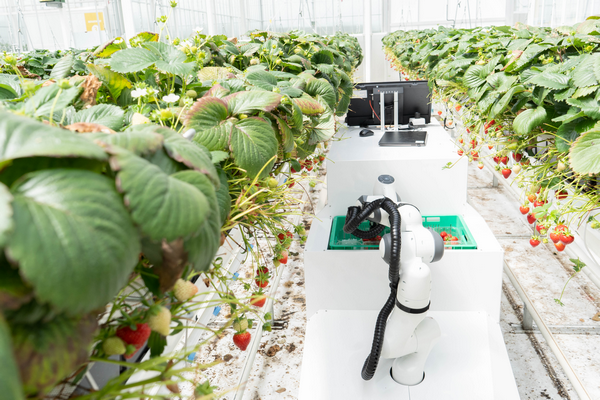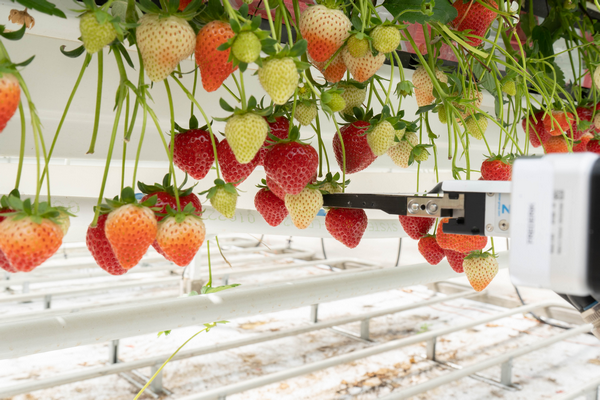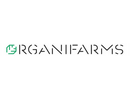“We are testing the robot with multiple varieties of strawberries to know the challenges associated with each. Varieties can have entirely different physiologies that result in different stems, leaf size, fruit size, and position on the plant,” says Hannah Brown, Chief Communications Officer at Organifarms.
The German agtech company is developing a strawberry harvesting robot named BERRY, which was awarded the Innovation Award in the category “Concept” at GreenTech Amsterdam 2022.

F.l.t.r. Hannah Brown, Birka Kallenbach and Mario Schäfer with Organifarms' winning harvesting robot
Strawberry harvesting is not without its challenges
Since the company’s win at GreenTech Amsterdam, Organifarms has moved out of the spotlight and back into the testing grounds to further improve the system and tackle the major challenges of harvesting strawberries robotically year-round.
As Hannah explains, training a robot to harvest strawberries is not straightforward due to the growth habit of the plant. For instance, strawberry production is not consistent year-round, which makes it difficult for the robot to distinguish fruits during the season’s peaks and valleys. During peak production, there are many berries, and the robot does not always have direct access to the fruit as other stems and developing clusters may stand in the way. As the system is designed to avoid damaging the plants, it sometimes is difficult for the robot to reach all the fruit.

“We have solved the difficult task of harvesting strawberries automatically in many conditions and are now focussing on optimizing our system for more challenging varieties,” explains Hannah.
“We are improving our systems to better handle obstacles. If you have a lot of stems and leaves hanging in front of the fruits, the robot typically won’t touch it to avoid damaging the plants,” Hannah adds. “It is tricky to help the robot touch the plant or push away foliage to access the fruits. We need a lot of precise sensors and algorithms, which we are currently optimizing”.

Partnering with Delphy, soon with greenhouse growers
According to Hannah, Organifarms has partnered with Delphy Innovative Soft Fruit Centre on trials to optimize the production of everbearing (or day-neutral) strawberry varieties, which produce berries consistently throughout the growing season, whereas June-bearers (or short-day) varieties produce high amounts in a short period of time.
Organifarms is also ready to work directly with greenhouse growers by offering low-risk, low-cost trials. During this period, growers can test the robots in their greenhouse and see if the harvesting solution is well suited to their environment. Any interested growers are encouraged to visit the website for more details and to book a demonstration in their own greenhouse.
 For more information:
For more information:
Hannah Brown, CCO
press@organifarms.de
Organifarms
www.organifarms.de
